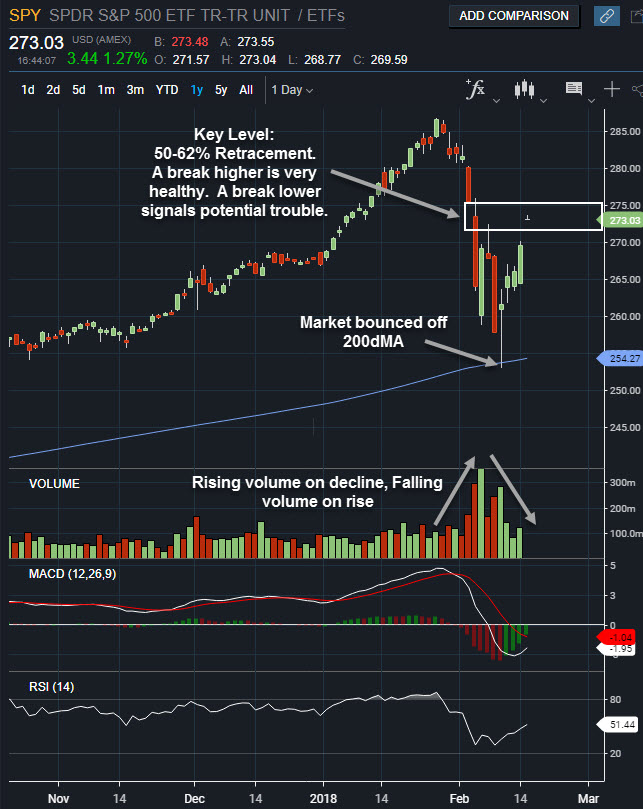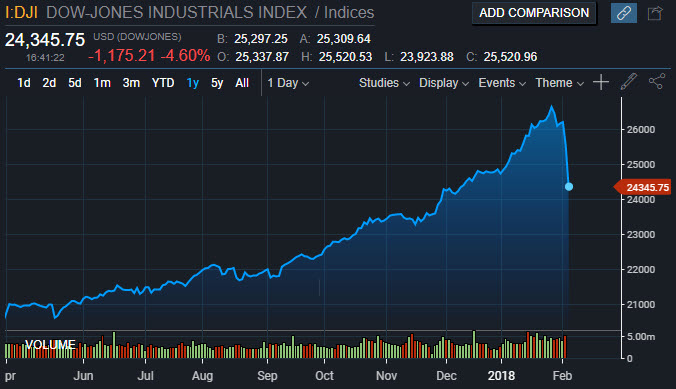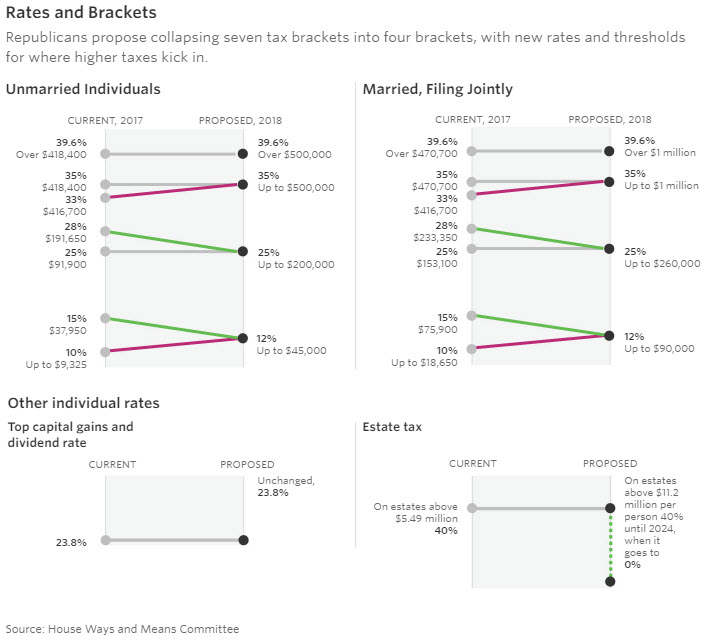We believe the next 1-2 days are the most important that the market has experienced since 2016. The market has had a strong bounce from the lows made last week, so we now focus our attention important levels in the markets to watch for next.
Now What?
Following last week’s strong decline in the markets, the past five days have shown positive price movement higher.
As we said last week, “Given the violent nature of this pullback, we would not be surprised to see snap-back rallies that are also equally strong.” We have now seen a strong snap-back rally. The question is where do we go from here? It is impossible to know for sure, but let’s look at the levels we find important right now.
S&P 500 Index
We’re keeping this update brief, so let’s let the charts do the talking. The chart below of the most widely held US stock index fund shows a few important things:
- The 12% decline stopped at the 200-day moving average (200dMA) (blue line). This is a very common technical level that many market participants watch. It is simply the average price of the index over the past 200 days. It is not surprising to see a pullback stop here, and it was very positive that the market held this important level.
- Volume increased on the decline, but has fallen on the rebound. Granted, volume is not nearly as important as it used to be in market analysis, but we would prefer to see volume increasing as the market is rising. Declining volume is a sign that there is lack of conviction in the recent rise.
- The market has bounced to a key 50-62% retracement level. This means that the market rise this week has recouped just over half of the previous decline. This is also a very common technical level that many people (and computers) watch.
If the market can sustain a break above the 50-62% retracement level, chances start to greatly improve that the market volatility is behind us. However, if the market starts to move lower from this level, the likelihood rises dramatically that we see the market back near the lows of last week, and potentially lower.
Thus, we believe we are currently in the most important 1-2 days during this entire volatile time. In fact, it is likely the most important two days the market has had since early 2016.
We stress that we have both entry and exit signals in place for our clients, and we are not attempting to guess which way the market will go from here. Any new exposure to stocks we add for clients will subsequently have very tight stop losses here.
Fixed Income
The bond market continues to show signs of stress. In fact, bonds are underperforming stocks so far this year, and showed no positive movements during the selloff. We have discussed rising yields many times, but we continue to stress that the fixed income markets have risks today that have not been seen in almost four decades.
The chart below shows the ticker TLT, which is a fund that holds long-term US treasury bonds. The price has fallen 18% over the past year-and-a-half, as yields have moved above 3%.
Common wisdom would suggest that US Treasury Bonds would perform very well in an environment where stocks fell 12% in a week. The right side of the chart shows that there was no movement into these supposed safe havens.
Price breaking down here also suggests entering into a period of increased selling pressure on bonds, with a continued rising rate environment. We think this scenario is very likely.
Bottom Line
We are taking a prudent and disciplined approach to this period of volatility. We hope the market continues to move higher, and hope we get signals to increase client exposure to risk. But as we’ve said before, hope is not an investment strategy.
The next 1-2 days in the markets are critical to near-term performance, and we are watching very closely.
Disclaimer This presentation is for informational purposes only. All opinions and estimates constitute our judgment as of the date of this communication and are subject to change without notice. > Neither the information provided nor any opinion expressed constitutes a solicitation for the purchase or sale of any security. The investments and investment strategies identified herein may not be suitable for all investors. The appropriateness of a particular investment will depend upon an investor’s individual circumstances and objectives. *The information contained herein has been obtained from sources that are believed to be reliable. However, IronBridge does not independently verify the accuracy of this information and makes no representations as to its accuracy or completeness.










